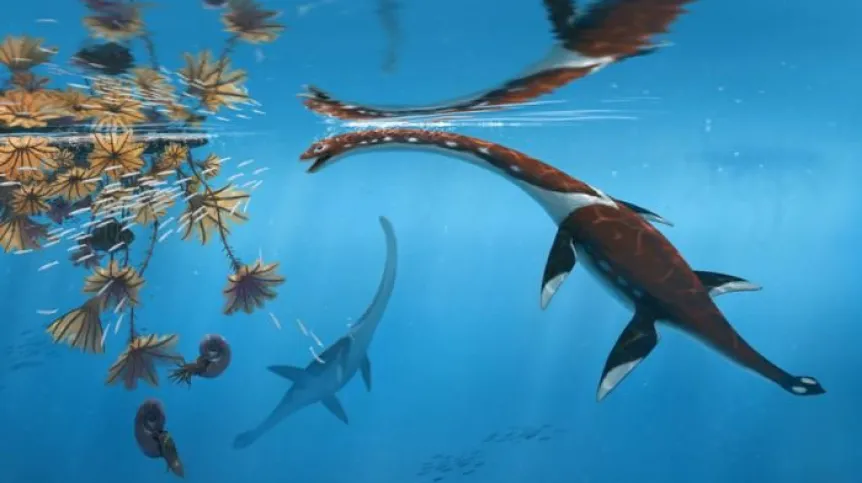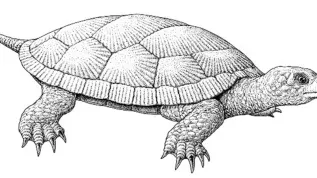
A previously unknown species of marine reptile from the Early Jurassic period has been identified at one of the world’s most renowned fossil sites in southern Germany, expanding scientific knowledge of ancient ocean ecosystems nearly 183 million years ago.
The newly classified species, named Plesionectes longicollum, belongs to the group of plesiosaurs—long-necked, predatory marine reptiles that lived between 240 and 65 million years ago and whose remains have been discovered across the globe.
The specimen, discovered in 1978 in a quarry in Holzmaden, Baden-Württemberg, was part of the collection of the Stuttgart State Museum of Natural History.
Although nearly complete, the fossil’s distinct anatomical features were only recently recognized following a detailed analysis led by palaeontologists Sven Sachs of the Natural History Museum in Bielefeld and Daniel Madzia of the Polish Academy of Sciences’ Institute of Paleobiology.
According to Sachs, the specimen had been in the collection for decades, but its exceptional anatomy was never fully examined.
The analysis showed an unusual combination of skeleton features, which clearly distinguishes it from all previously known plesiosaurs.
The results were published in the journal PeerJ Life & Environment. Measuring approximately 3.2 meters in length, Plesionectes longicollum was distinguished by an exceptionally long neck consisting of at least 43 vertebrae.
Despite being an immature individual at the time of death, researchers noted that its defining anatomical traits were sufficiently developed to justify the establishment of a new genus and species.
'This discovery is another piece of the puzzle of the evolution of sea ecosystems at the key moment of the history of the Earth,” he said. “The early stage of the Toarcian (the first stage of the Early Jurassic - ed. PAP), when this animal lived, was a period of serious environmental changes, including a significant anoxic ocean event (characterized by oxygen deficiency - PAP) that had a global effect on sea life', said Madzia.
The Holzmaden site, known for its exceptionally preserved Jurassic marine fossils, has been studied for centuries. Fossils of plesiosaurs, marine crocodiles, and other sea creatures dating back roughly 180 million years have been unearthed there since the 16th century, with systematic scientific research beginning in the early 1800s.
Before the identification of Plesionectes longicollum, five other plesiosaur species had been documented from the Holzmaden Posidonia Shale, representing three major evolutionary lineages. (PAP)
ekr/ agt/













